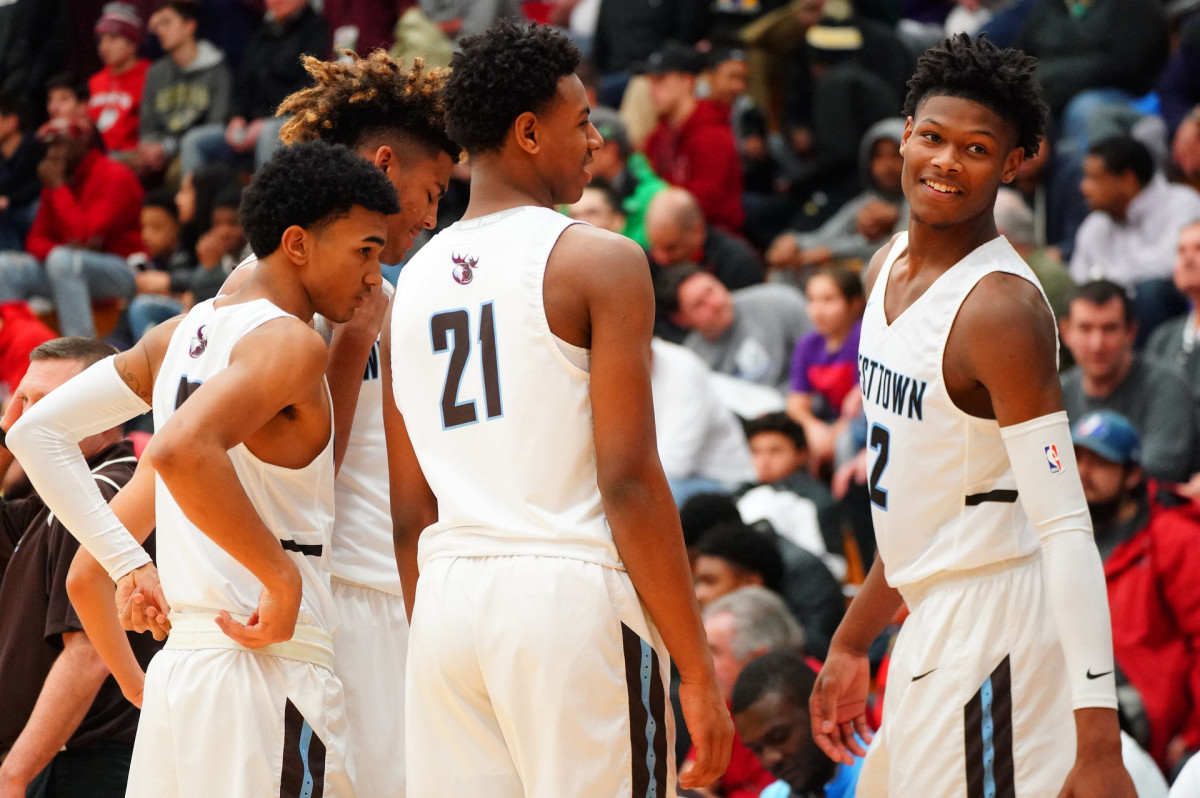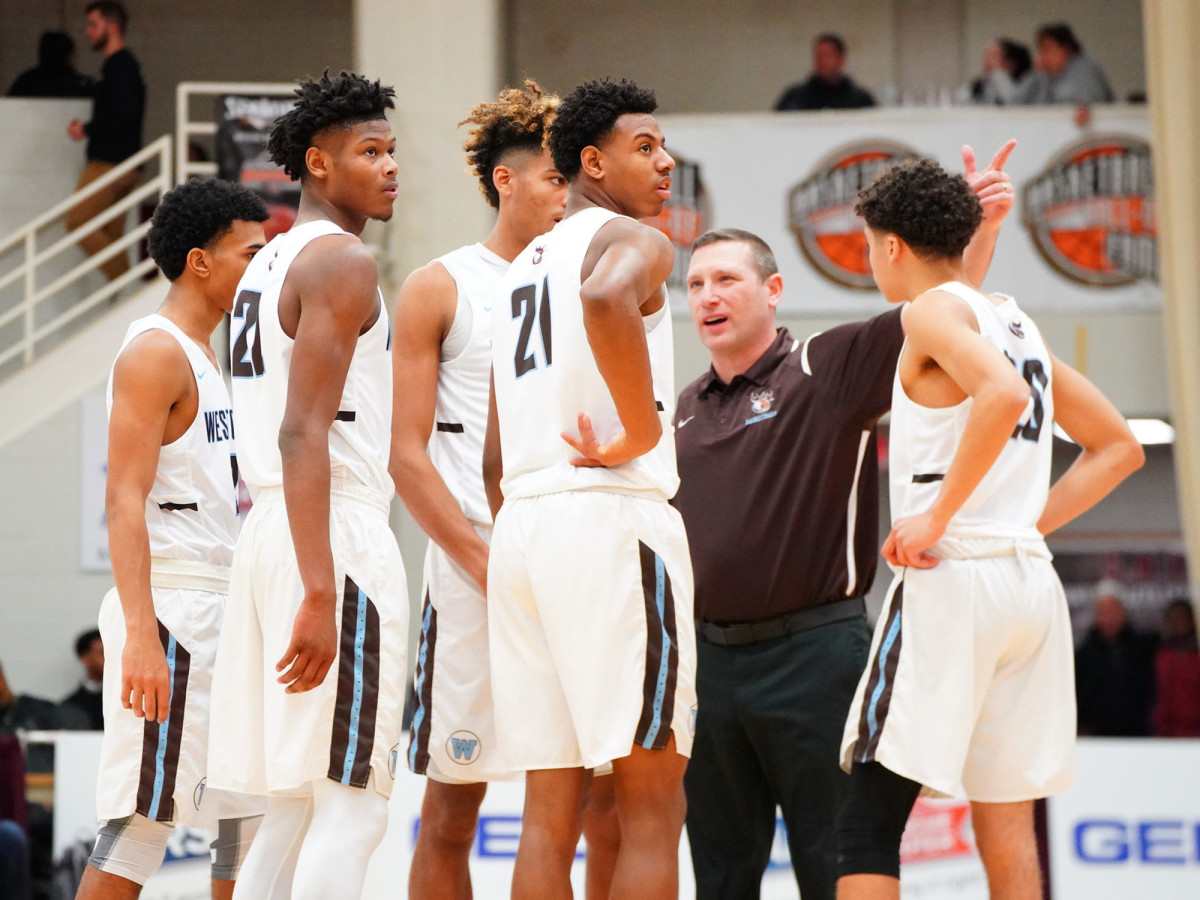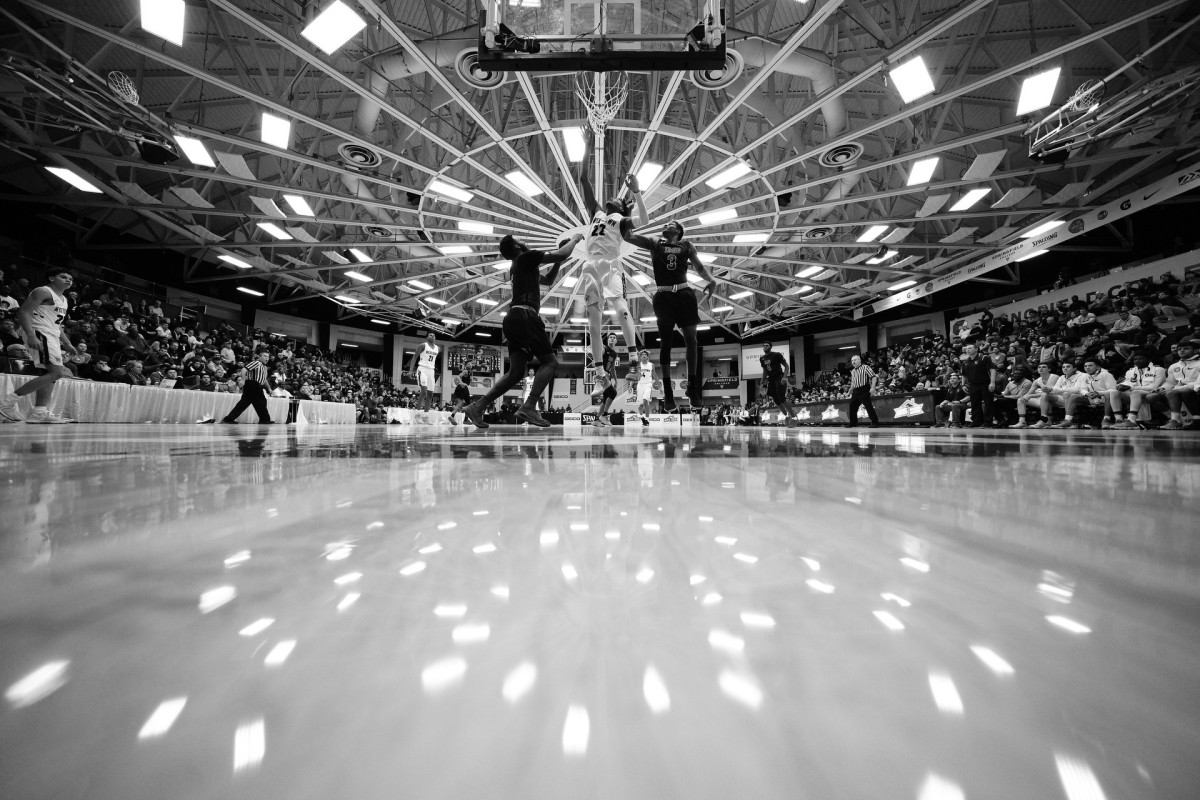Duke-Bound Cam Reddish Could Reset Expectations for the Modern Basketball Player

At 6'7", Cameron Reddish sees easily over most guards but isn't burly enough, at 210 pounds, to bang with big men on the low block—just right for a small forward. At 18, he is only two inches shorter and 10 pounds lighter than five-time NBA All-Star small forward Paul George. Read about Reddish on a recruiting website, and you'll likely see him listed as "SF." But Reddish has probably spent more time at point guard during his high school career, deftly navigating ball screens, rifling passes into tight windows, sinking three-point shots off the dribble and harassing opposing backcourts with his 7'1" wingspan and lateral quickness. As basketball teams increasingly covet malleable players, the difference between the position that appears to fit Reddish physically and the one that optimizes his perimeter skills is immaterial.

In an era in which the Sixers' Ben Simmons can become the NBA's No. 1 draft pick and Rookie of the Year front-runner as a 6'10" point guard and Draymond Green can hold down the center spot in the Warriors' best lineup at 6'7", Reddish illustrates a fascinating paradox: He belongs to no position and to every position. By learning to play like a point guard, Reddish has elevated an already tantalizingly high ceiling. He—and his ready-made name for the Cameron Crazies—is headed to Duke next fall. Already he is an early candidate to be selected near the top of the 2019 lottery: Draft expert Jonathan Givony pegged him as the No. 2 pick in his most recent mock.
Reddish, who calls basketball his "heartbeat," says that the only things he does that are not school- or hoops-related are playing PS4 games like Call of Duty and Grand Theft Auto or "messing with" his younger brother, Aaron, a freshman at Westtown School, the same boarding school in West Chester, Pa., that Reddish attends. The 2016–17 team is the subject of a forthcoming documentary on SI TV. When Reddish isn't on a court, there's a good chance he's staring at one on a screen. His consumption of YouTube highlight reels is habitual.
On a typical weekday, Reddish rises at 6 a.m., makes the short trek to the Westtown gym and gets up as many shots as he can before a 7 a.m. breakfast in the dining hall. He denies himself the reward of hearing the swoosh of every made three, free throw and midranger, instead pumping Lil Uzi Vert through his headphones. Why? Reddish admits to being creeped out by the creaking sounds that reverberate around the otherwise vacant gym. "I hate hearing things," he says.

Reddish could play the one before he grew into the size of a small-ball four. Henry Fairfax, Reddish's coach at the Haverford School, an all-boys prep school on Philadelphia's Main Line, knew that Reddish had the skills to play point guard, but he already had another guard who could "handle the ball and decision-make." After playing varsity as an eighth- and ninth-grader at Haverford, Reddish transferred to Westtown, a pastoral, 600-acre institution with stately redbrick buildings and a 14-acre lake located about a half hour southwest of his home in Norristown, Pa. The school offered rigorous academics and a coach, Seth Berger, whom Reddish's father knew as the founder of the And1 shoe and apparel company. Robert also coached Berger's son T.J. in AAU. Berger didn't hesitate to put the ball in Reddish's hands, and with two other blue-chip recruits on the roster—6'11" forward Mohamed Bamba (now a freshman at Texas) and 6'6" shooting guard Brandon Randolph (a freshman at Arizona)—Reddish could hone his skills as a distributor without assuming the scoring burden.
Five years ago Reddish began training with Eric (Pooh) Evans, the older brother of 6'6", 220-pound Grizzlies swingman Tyreke Evans. Pooh looked at Reddish's parents—his father, Robert, is 6'7" and played basketball at Virginia Commonwealth in 1989–90 and '90–91, and his mother, Zanthia, is an elementary school principal who's 6 feet tall—and figured Reddish, who was around 6'2" when he began high school, still had plenty of growing to do. But Evans thought that no matter Reddish's ultimate height, it was vital to groom him into a playmaker. They've worked on everything from ballhandling to footwork to shooting, and Reddish says it's "something new every day."
"It was kind of a cookie cutter for me," Pooh Evans says, "because I trained my younger brother the same way."
The NBA is changing in ways that favor Reddish's adaptable game. Defensive schemes that rely on players switching assignments are in vogue, and, as of March 1, pace (97.3 possessions per 48 minutes) is the most breakneck it's been since 1990–91 (97.8). Also, the average number of attempts beyond the arc (28.8) is at an all-time high. (The three-point rate and number of possessions have been rising in the college game, too; both are at the highest levels they've been since at least 2001–02.) To thrive in today's pace-and-space NBA, coaches need long, nimble athletes who eschew rigid positional designations. The Warriors' famous Death Lineup of Stephen Curry, Klay Thompson, Andre Iguodala, Harrison Barnes and Green was the gold standard, and the Rockets' starting unit includes three players 6'6" or shorter and only one player taller than 6'8". Guards Chris Paul and James Harden and wings P.J. Tucker and Trevor Ariza surround 6'10" big man Clint Capela. As Heat coach Erik Spoelstra once noted, "We don't care about positions. We don't care about conventional boxes where players fit in."

Reddish's run with Team USA at the FIBA U19 World Cup last summer offered a window into his versatility. The team's coach, Kentucky's John Calipari, used Reddish at point guard even though there were several "official" PGs on the roster, such as Oregon sophomore Payton Pritchard, Purdue sophomore Carsen Edwards and Calipari's own signee Immanuel Quickley. In the first half of the U.S.'s preliminary-round win over Iran, Reddish picked a ballhandler's pocket at half court and glided in for a one-handed dunk, used a screen to set up an off-the-dribble three and split a double team while falling forward and tossing a two-handed pass to an open teammate. While covering the event in Cairo, at which Reddish led Team USA in three-point percentage and player efficiency, Hall of Fame basketball writer Dick Weiss described Reddish as a "peek into the future of men's basketball."
This might be a convenient place to mention that Reddish has no trouble getting buckets of his own. Last year he ranked fifth in the Nike Elite Youth Basketball League with an average of 22.6 points, and he scored 53 points on only 22 attempts in a Westtown win over Holy Spirit (Atlanta) on Dec. 10. In November, a video posted to four-time NBA scoring champion Kevin Durant's YouTube channel featured footage of several top prospects. He characterized Reddish's athleticism as "off the charts" and added, "I like this kid, man. He's going to be a star."
The coaches of the blue-blooded schools that recruited Reddish no doubt shared Durant's sentiment. In September, after releasing a list of five finalists (Connecticut, Duke, Kentucky, UCLA and Villanova), Reddish verbally committed to Duke. "I knew from the jump [that] I wanted to go there," he says. The Blue Devils are likely to lose three starters to the NBA this offseason in addition to senior Grayson Allen—big men Marvin Bagley III and Wendell Carter Jr. and point guard Trevon Duval are projected as first-round draft picks—but they've already signed two other top 10 recruits (wing R.J. Barrett and point guard Tre Jones) and received a verbal from another (power forward Zion Williamson). Coach Mike Krzyzewski can play Reddish alongside any of the newcomers without having to worry about fit. "Cameron Reddish," the Duke coach said, "is just a beautiful basketball player."

Despite being the No. 1 prospect in the class of '18, according to 247Sports, Reddish has a much lower profile than Canadian phenom Barrett and viral dunking sensation Williamson, even after a TMZ video was posted last August showing Reddish, who was in Los Angeles for a Nike basketball camp, leaving an eatery with LeBron James and James's agent, Rich Paul. Reddish says that James gave him advice on how to manage being a sports celebrity. "What it's like being him," Reddish says, "and all the publicity he gets. How he has to deal with all that type of stuff."
There are criticisms of Reddish's game. He can be passive, though this is a label commonly affixed to the gifted, for whom the sport often appears too easy. Reddish does concede that he doesn't "always go hard, which I've got to fix." That flaw is drowned out by a hype that will only increase in the 15 months between now and the 2019 NBA draft. The projections range from the optimistic, yet realistic ("a Paul George-type of player," says Rob Brown, the program director of Reddish's AAU team) to the borderline absurd ("I actually think he's going to be a 6'8" version of Chris Paul," Berger says). Fairfax went the old-school route in finding someone to liken to a definitively new-age player. "He reminds you of Penny Hardaway," Fairfax says of Reddish. Drop Reddish into the prime of Hardaway's NBA career, as Shaquille O'Neal's costar with the Orlando Magic in the 1990s, and it's hard to say how coaches would use him, or whether f or g would appear next to his name in box scores. Today that distinction is mostly academic, and coaches can expect positive results when they move him up or down the lineup. Reddish's position might remain uncertain, but his future is radiantly clear.
